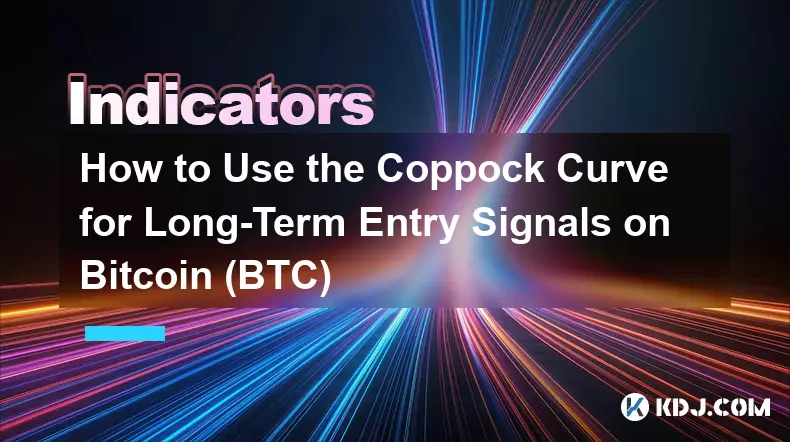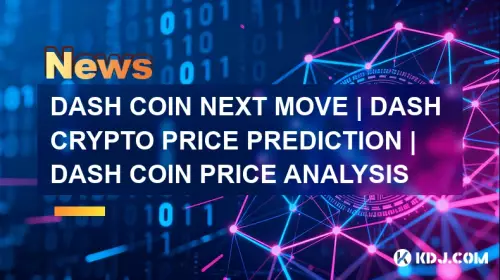-
 bitcoin
bitcoin $107015.826941 USD
-2.18% -
 ethereum
ethereum $3637.352324 USD
-5.18% -
 tether
tether $0.999831 USD
-0.02% -
 xrp
xrp $2.338078 USD
-6.23% -
 bnb
bnb $998.272150 USD
-6.97% -
 solana
solana $167.598257 USD
-10.12% -
 usd-coin
usd-coin $0.999863 USD
0.01% -
 tron
tron $0.282573 USD
-5.09% -
 dogecoin
dogecoin $0.169891 USD
-7.39% -
 cardano
cardano $0.557554 USD
-7.03% -
 hyperliquid
hyperliquid $39.914802 USD
-5.85% -
 chainlink
chainlink $15.414549 USD
-9.97% -
 bitcoin-cash
bitcoin-cash $510.361911 USD
-4.26% -
 ethena-usde
ethena-usde $0.999194 USD
-0.03% -
 stellar
stellar $0.282092 USD
-6.07%
How to use the KDJ indicator in a trending market?
In trending crypto markets, adapt the KDJ indicator by using %K/%D crossovers as continuation signals and confirm with volume, EMA, and MACD to avoid false reversals. (154 characters)
Oct 21, 2025 at 08:21 am

Understanding the KDJ Indicator in Trending Markets
The KDJ indicator, a momentum oscillator derived from the Stochastic Oscillator, consists of three lines: %K, %D, and %J. It is widely used in cryptocurrency trading to identify overbought and oversold conditions. In trending markets, its traditional signals may generate false readings if applied without adjustments.
1. The %K line reflects the current closing price relative to the high-low range over a specified period, usually 9 candles.
- The %D line is a moving average of %K, offering signal confirmation.
- The %J line represents the divergence of %K from %D and often acts as an early momentum signal.
- In strong uptrends, the KDJ can remain in overbought territory for extended periods without reversing.
- Similarly, during strong downtrends, the indicator may stay in oversold zones while prices continue falling.
Adapting KDJ for Uptrends
In bullish crypto markets, relying solely on overbought signals (typically above 80) can lead to premature exits. Traders must reinterpret the KDJ behavior within the context of sustained momentum.
1. Instead of selling at overbought levels, look for %K crossing above %D as a continuation signal in an established uptrend.
- Monitor the slope of the %J line; a sharp rise suggests accelerating momentum, reinforcing long positions.
- Use pullbacks where %K drops below 50 but remains above 20 as potential entry zones, especially when price finds support on key moving averages.
- Confirm trend alignment using higher timeframes like the 4-hour or daily chart to avoid countertrend traps.
- Combine with volume analysis—rising volume on %K/%D crossovers adds credibility to breakout attempts.
Applying KDJ in Downtrends
During bearish phases in the crypto market, the KDJ tends to produce misleading oversold signals that tempt traders into early reversals. Strategic filtering is essential.
1. Treat oversold readings (below 20) as potential shorting opportunities only when aligned with broader downward pressure.
- Wait for %K to cross below %D in the lower zone to confirm renewed selling momentum.
- Avoid buying simply because the indicator is oversold; instead, wait for structural shifts such as breakouts above key resistance levels.
- Watch for divergences: if price makes a new low but %K forms a higher low, it may signal weakening bearish momentum.
- Pair with moving average ribbons or ADX to confirm trend strength before acting on KDJ signals.
Filtering Noise with Additional Tools
To enhance reliability, integrate the KDJ with complementary indicators that validate trend direction and reduce false entries.
1. Use the 50-period EMA as a dynamic filter: only take long KDJ crossovers above the EMA in uptrends.
- Apply MACD to confirm directional bias—when MACD line is above zero and rising, favor bullish KDJ signals.
- Incorporate support/resistance levels: KDJ crossovers near significant zones carry more weight.
- Adjust sensitivity by modifying the default periods (e.g., use 14 instead of 9) to smooth erratic swings common in volatile altcoins.
- On lower timeframes like 15-minute charts, combine with order book data to assess whether KDJ extremes reflect real liquidity shifts.
Frequently Asked Questions
Can the KDJ indicator predict trend reversals accurately?It can highlight potential turning points through divergences, but standalone reversal signals are unreliable. Confirmation from price action or volume is necessary.
What settings work best for KDJ in fast-moving crypto markets?A setting of 14,3,3 often reduces noise compared to the default 9,3,3, especially on hourly and 4-hour charts where volatility spikes are frequent.
Should I rely on KDJ for scalping in trending conditions?Scalpers can use KDJ for timing entries within the trend, but should couple it with tight stop-losses and real-time order flow analysis due to lag in extreme moves.
How does Bitcoin dominance affect KDJ signals on altcoins?When Bitcoin dominance rises, altcoins often enter downtrends regardless of individual KDJ readings. Monitoring dominance helps contextualize whether signals are likely to fail due to market-wide rotation.
Disclaimer:info@kdj.com
The information provided is not trading advice. kdj.com does not assume any responsibility for any investments made based on the information provided in this article. Cryptocurrencies are highly volatile and it is highly recommended that you invest with caution after thorough research!
If you believe that the content used on this website infringes your copyright, please contact us immediately (info@kdj.com) and we will delete it promptly.
- Red Poppy Coin, Australia: A Collector's Guide to the 2025 Release
- 2025-11-04 11:00:15
- Shiba Inu Gets the Nod: Good News for SHIB Holders!
- 2025-11-04 09:35:12
- PI Faces Scrutiny, LINK Gains, BlockDAG Miner Momentum: A Crypto Triad
- 2025-11-04 09:35:12
- Spare Change, Cash, and Bang for Your Buck: A New Yorker's Guide
- 2025-11-04 11:30:01
- Aster, CZ, and $25M: Decoding the DeFi Drama
- 2025-11-04 11:30:01
- Blazpay: The Next Big Crypto Coin Ready to Explode?
- 2025-11-04 09:00:01
Related knowledge

Technical analysis for crypto: using RSI and MACD to find trading signals.
Nov 03,2025 at 03:18pm
Decentralized Exchanges Are Reshaping Trading Dynamics1. Decentralized exchanges (DEXs) have gained significant traction by eliminating intermediaries...

The Best Exponential Moving Average (EMA) Settings for Crypto Swing Trading
Oct 25,2025 at 04:55pm
The Best Exponential Moving Average (EMA) Settings for Crypto Swing TradingSwing trading in the cryptocurrency market relies heavily on identifying tr...

How to Use the Coppock Curve for Long-Term Entry Signals on Bitcoin (BTC)
Oct 31,2025 at 03:01pm
Understanding the Coppock Curve in Bitcoin Analysis1. The Coppock Curve is a momentum indicator originally designed for stock market indices but has f...

A Beginner's Guide to Finding Divergence with the MACD on the Solana (SOL) Chart
Oct 26,2025 at 12:36pm
Understanding MACD and Its Role in Solana Trading1. The Moving Average Convergence Divergence (MACD) is a momentum indicator widely used in cryptocurr...

How to Use the Aroon Indicator to Identify New Trends in Cardano (ADA)
Oct 26,2025 at 10:18pm
Understanding the Aroon Indicator in Cryptocurrency Trading1. The Aroon indicator is a technical analysis tool designed to identify whether an asset i...

Trading the Ichimoku Cloud "Kumo Twist" for Ethereum (ETH) Reversals
Oct 27,2025 at 01:54am
Understanding the Ichimoku Cloud and Its Components1. The Ichimoku Cloud, also known as Ichimoku Kinko Hyo, is a comprehensive technical analysis tool...

Technical analysis for crypto: using RSI and MACD to find trading signals.
Nov 03,2025 at 03:18pm
Decentralized Exchanges Are Reshaping Trading Dynamics1. Decentralized exchanges (DEXs) have gained significant traction by eliminating intermediaries...

The Best Exponential Moving Average (EMA) Settings for Crypto Swing Trading
Oct 25,2025 at 04:55pm
The Best Exponential Moving Average (EMA) Settings for Crypto Swing TradingSwing trading in the cryptocurrency market relies heavily on identifying tr...

How to Use the Coppock Curve for Long-Term Entry Signals on Bitcoin (BTC)
Oct 31,2025 at 03:01pm
Understanding the Coppock Curve in Bitcoin Analysis1. The Coppock Curve is a momentum indicator originally designed for stock market indices but has f...

A Beginner's Guide to Finding Divergence with the MACD on the Solana (SOL) Chart
Oct 26,2025 at 12:36pm
Understanding MACD and Its Role in Solana Trading1. The Moving Average Convergence Divergence (MACD) is a momentum indicator widely used in cryptocurr...

How to Use the Aroon Indicator to Identify New Trends in Cardano (ADA)
Oct 26,2025 at 10:18pm
Understanding the Aroon Indicator in Cryptocurrency Trading1. The Aroon indicator is a technical analysis tool designed to identify whether an asset i...

Trading the Ichimoku Cloud "Kumo Twist" for Ethereum (ETH) Reversals
Oct 27,2025 at 01:54am
Understanding the Ichimoku Cloud and Its Components1. The Ichimoku Cloud, also known as Ichimoku Kinko Hyo, is a comprehensive technical analysis tool...
See all articles










































































